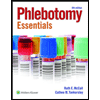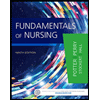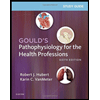
To identify: The structures that constitute the lymphatic system and their general functions.
Concept introduction: A complex network of cells, tissues, and organs that works together to protect the body and fight against pathogens or foreign substances are collectively known as immune system. Lymphatic system consists of a network of vessels, tissue, and ducts that carries a clear fluid (lymph) to all body parts.
Explanation of Solution
The lymphatic system is an essential part of the immune system that constitutes the lymphatic vessels and lymphoid tissue, which includes pharyngeal tonsils, palatine, spleen, lymph nodes, bone marrow, and thymus gland.
Organs of lymphatic system:
Primary lymphoid organs
- Bone marrow:
The spongy tissue called bone marrow is present in the center of bones (cancellous or spongy). This organ is an important site for the production of blood cells (hematopoiesis). It is the major site where B lymphocytes mature.
- Thymus:
The thymus is the primary lymphoid organ. It is situated in the neck of vertebrates. Two identical lobes are found in the thymus. They are located in the anterior superior mediastinum, behind the sternum and in front of the heart. The thymus plays a fundamental role in the mechanism of immunity against infections. Before birth, they are the final site for the development of lymphocytes. It secretes hormones after birth, which facilitate the formation of mature T-lymphocytes. These T-lymphocytes help to attack the foreign cells and act as regulators for the immune system.
Secondary lymphoid organs
- Spleen:
Spleen is the secondary lymphoid organ. It is an organ that is present in the upper left part of the abdomen. It helps to remove particulate matter and filter blood. It helps to remove antibody-coated bacteria and blood cells from the lymph node circulation by producing antibodies in its white pulp. This organ has many functions. They are as follows:
- Defense: The spleen is the site for phagocytic clearance of the bloodstream. The microbes are eliminated from the blood by macrophages and they are destroyed through phagocytosis process.
- Hematopoiesis: The spleen can act as a hematopoietic organ. The maturation and activation of lymphocytes and monocytes occur in the spleen. The erythrocytes are also produced in the spleen after birth.
- Blood reservoir: The spleen has a large amount of blood in venous sinuses and in pulp.
- Red blood cell and platelet destruction: These functions are mediated by macrophages. This organ destroys the platelets and old erythrocytes in the spleen through phagocytosis process.
- Lymph nodes:
The lymph nodes are the secondary lymphoid organs present in the immune system. The lymph nodes are small glands that are situated throughout the body and are linked with the help of lymphatic vessels. These organs are the main sites of B and T lymphocytes. These organs act as a defense system. Before entering circulation, they filter the foreign particles from the lymph fluid. The lymph nodes are concentrated with lymphocytes (B-lymphocyte, T-lymphocyte, and other white blood cells) that could assess for the presence of foreign pathogenic materials like bacteria, virus, or
fungi . - Tonsils:
Tonsils are soft tissues found in the lymphatic system. The pharyngeal and palatine tonsils contain lymphoid tissue which is present at the back of the throat. The tonsils can serve as sentinels that protect the lungs and
digestive system from bacterial infection. They are the first line of defense during the attack of foreign organisms; thus, cause infections (tonsillitis).
Want to see more full solutions like this?
Chapter 11 Solutions
Gould's Pathophysiology for the Health Professions, 6e
- The importance of monitoring resident's wound healing (bed sores, cuts, and scrapes, etc.) and how can a nutritionist utilize this in their career? Please not just a short explanation.arrow_forwardThe importance of seeing how it is to work as a chief in a nursing home and how they accommodate for special diets (low sodium, low sugar, heart healthy, etc.) and how can a nutritionist utilize this in their career? Please not just a short explanation.arrow_forwardThe importance of dealing with work confrontation (different healthcare departments fighting; diet aide and CNA) as a manager of a kitchen and how can a nutritionist utilize this in their career? Please not just a short explanation.arrow_forward
- Question 1: You are the Community Dietitian for the local public health agency. Recent news coverage has highlighted the state of food insecurity and child hunger in your county. Initial reports indicate that 15% of the population is food insecure. Of this group, 28.4% are children. It is estimated that 86% of the food insecure population is eligible for federal nutrition assistance. You are asked to conduct a community needs assessment and, ultimately, develop an appropriate intervention aimed at reducing hunger. First, however, you must submit a plan for the needs assessment. Complete the following: 1. State the nutritional problem (10 pts) 2. Set the parameters of the assessment (20 pts, 5 pts per bullet) A. State the purpose of the assessment B. Identify the community and target population for this assessment C. Develop 2 goals and 2 SMART objectives for each goal D. Discuss the major categories of community data and target population data E. Specify the types of data you might…arrow_forwardAssignment Instructions: Nursing Research Essay Objective: Select a specific area of nursing that captivates your interest. Compose a comprehensive essay, ranging from 300 to 500 words, that delves into the intricacies of nursing research within your chosen area. It is recommended that you consider the topic carefully as this topic, should be the topic for your course research project: see week 4 assignments. Your essay should elucidate the following points: The Significance of Nursing Research: Explore how nursing research in your selected area contributes to advancements in applied medicine. Discuss the potential achievements and innovations that can arise from dedicated nursing research in this field. Articulate the value and impact of such research on patient care, healthcare practices, and overall medical knowledge. Research Methods and Approaches: Identify the most effective methods for conducting nursing research in your chosen area. Highlight specific topics or research…arrow_forwardThe importance of understanding low meal consumption of residents in a nursing home and how can a nutritionist utilize this in their career? Please not just a short explanation.arrow_forward
- The importance of accommodating special diets (diabetic, low sodium, etc.) in a nursing home and how can a nutritionist utilize this in their career? Please not just a short explanation.arrow_forwardThe importance of making a weekly clean list for kitchen staff in a nursing home and how can a nutritionist utilize this in their career? Please not just a short explanation.arrow_forwardThe importance of keeping a clean food pantry in a nursing home and how can a nutritionist utilize this in their career? Please not just a short explanation.arrow_forward
 Phlebotomy EssentialsNursingISBN:9781451194524Author:Ruth McCall, Cathee M. Tankersley MT(ASCP)Publisher:JONES+BARTLETT PUBLISHERS, INC.
Phlebotomy EssentialsNursingISBN:9781451194524Author:Ruth McCall, Cathee M. Tankersley MT(ASCP)Publisher:JONES+BARTLETT PUBLISHERS, INC. Gould's Pathophysiology for the Health Profession...NursingISBN:9780323414425Author:Robert J Hubert BSPublisher:Saunders
Gould's Pathophysiology for the Health Profession...NursingISBN:9780323414425Author:Robert J Hubert BSPublisher:Saunders Fundamentals Of NursingNursingISBN:9781496362179Author:Taylor, Carol (carol R.), LYNN, Pamela (pamela Barbara), Bartlett, Jennifer L.Publisher:Wolters Kluwer,
Fundamentals Of NursingNursingISBN:9781496362179Author:Taylor, Carol (carol R.), LYNN, Pamela (pamela Barbara), Bartlett, Jennifer L.Publisher:Wolters Kluwer, Fundamentals of Nursing, 9eNursingISBN:9780323327404Author:Patricia A. Potter RN MSN PhD FAAN, Anne Griffin Perry RN EdD FAAN, Patricia Stockert RN BSN MS PhD, Amy Hall RN BSN MS PhD CNEPublisher:Elsevier Science
Fundamentals of Nursing, 9eNursingISBN:9780323327404Author:Patricia A. Potter RN MSN PhD FAAN, Anne Griffin Perry RN EdD FAAN, Patricia Stockert RN BSN MS PhD, Amy Hall RN BSN MS PhD CNEPublisher:Elsevier Science Study Guide for Gould's Pathophysiology for the H...NursingISBN:9780323414142Author:Hubert BS, Robert J; VanMeter PhD, Karin C.Publisher:Saunders
Study Guide for Gould's Pathophysiology for the H...NursingISBN:9780323414142Author:Hubert BS, Robert J; VanMeter PhD, Karin C.Publisher:Saunders Issues and Ethics in the Helping Professions (Min...NursingISBN:9781337406291Author:Gerald Corey, Marianne Schneider Corey, Cindy CoreyPublisher:Cengage Learning
Issues and Ethics in the Helping Professions (Min...NursingISBN:9781337406291Author:Gerald Corey, Marianne Schneider Corey, Cindy CoreyPublisher:Cengage Learning





